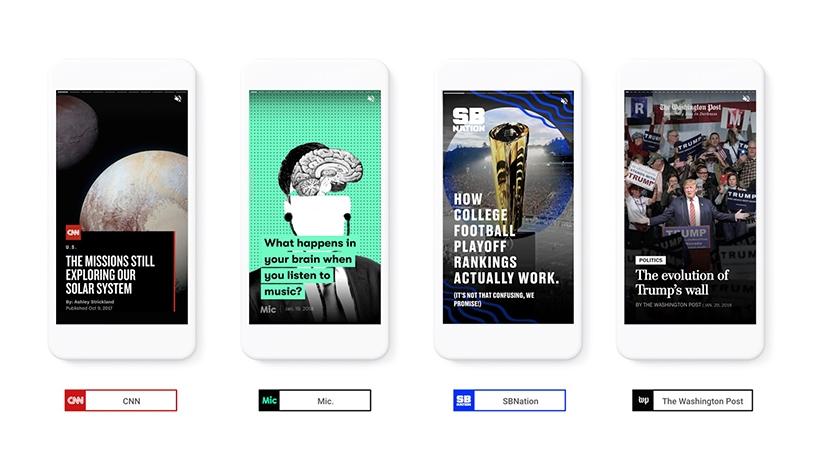
Invented by Snapchat and made popular by Instagram, content-rich full-screen stories will soon start appearing in Google search results.
The company announced this week that it will start testing a feature, called accelerated mobile pages (AMP) stories, with plans to roll it out to other Google products in the future.
AMP stories comes out of Google's AMP Project, an open source initiative that aims to make it easy for publishers to create mobile-friendly content once and have it load instantly everywhere.
Rudy Galfi, product manager for AMP at Google, said in a blog post that the AMP story format will provide content publishers with a mobile-focused format for delivering news and information as visually rich, tap-through stories.
On other social media sites, like Snapchat and Instagram, these stories (in vertical format to fit how most people hold their phones) allow users to post pictures and videos that disappear after 24 hours.
AMP stories are differentiated as they are created by publishers, not individuals, and do not disappear.
Mike Sharman, Retroviral co-founder says: "Google should acquire an established player and pay the premium for it. Plus, Buzz et al were unsexy attempts at playing in spaces that are already saturated.
"Google dominates when it's remarkable, not when it's a me-too."
Arthur Goldstuck, MD of World Wide Worx, has different ideas. He says Google AMP stories are an evolution of the kind of search that is already available on Google. For example, when searching for an exchange rate or the weather on the site, an interactive widget appears at the top of the search results.
"Google stories takes current results to the next stage of content enrichment. Although it is very much in line with what other platforms are doing, it is not just trying to cash in on a trend. In the case of search results, it is very much an evolution.
"Especially as we are on the cusp of moving away from pure text display towards voice-based results, we can expect search to become fully multimedia.
"One has to look at this as the continuum of interfaces not just as a knee-jerk reaction to what went before," says Goldstuck.
He says stories are more attractive and more engaging as they have the potential to capture the user's full attention as it takes over the whole screen without distraction.
Publishers will find new ways to leverage this functionality to give advertisers new forms of advertising, and will be a great addition to Google's bouquet of advertising options, he notes.
Galfi says: "Some stories are best told with text, while others are best expressed through images and videos. On mobile devices, users browse lots of articles, but engage with few in-depth. Images, videos and graphics help publishers to get their readers' attention as quickly as possible and keep them engaged through immersive and easily consumable visual information."
He says a group of publishers, including CNN, Conde Nast, Hearst, Mashable, Meredith, Mic, Vox Media and The Washington Post, came together with Google to help create this format in a way that would minimise technical challenges.
"The mobile Web is great for distributing and sharing content, but mastering performance can be tricky. Creating visual stories on the Web with the fast and smooth performance that users have grown accustomed to in native apps can be challenging. Getting these key details right often poses prohibitively high start-up costs, particularly for small publishers.
"AMP stories are built on the technical infrastructure of AMP to provide a fast, beautiful experience on the mobile Web. Just like any Web page, a publisher hosts an AMP story HTML page on their site and can link to it from any other part of their site to drive discovery. And, as with all content in the AMP ecosystem, discovery platforms can employ techniques like pre-renderable pages, optimised video loading and caching to optimise delivery to the end-user," says Galfi.
From today, any publisher or Web site owner can try the format. The format comes with pre-set but flexible layout templates, standardised user-interface controls, and components for sharing and adding follow-on content. There are also a series of tutorials available.
Share